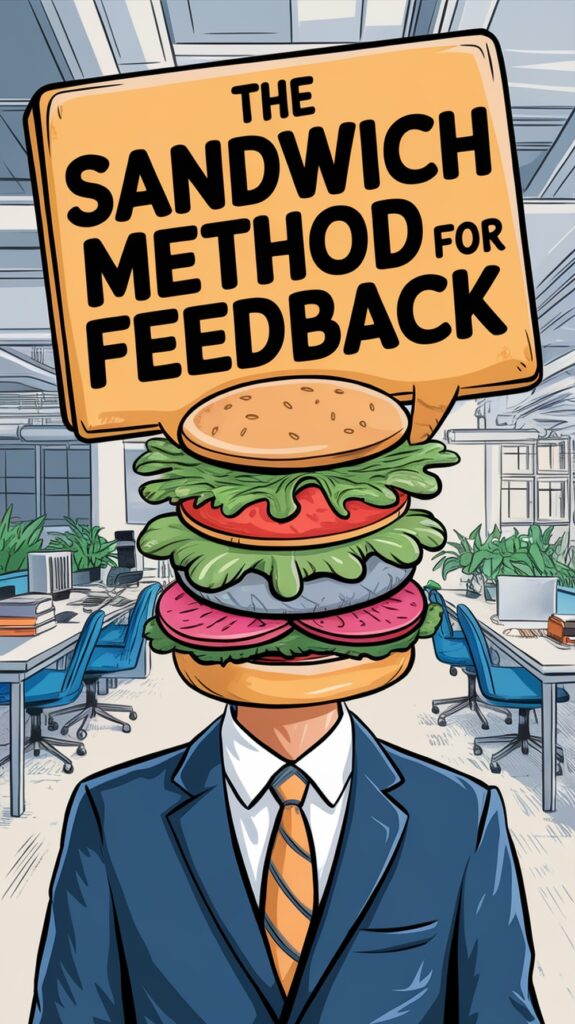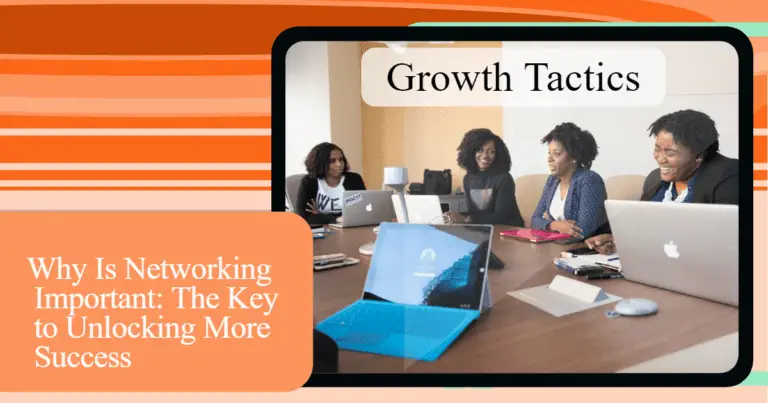The first step in the popular sandwich method for feedback is to open with a compliment. Next, it focuses on the constructive change or correction required, and concludes with another affirmative comment.
I like to employ this style frequently with my employees. Taking this approach helps get the point across, but also does not leave employees feeling bad about the mistakes they make.
In this article, we’ll get into more detail on the sandwich method and how to properly use it for a better, more productive workplace.
Jump To Section
What is the sandwich feedback method?
The sandwich feedback method blends praise and critique in a three-part exchange: a positive statement, followed by a corrective one, wrapped up with another positive. This method provides positive and negative feedback simultaneously. The intention behind this is to ensure that criticism doesn’t come across as brutal.
By beginning with appreciation, employees feel acknowledged, and by leaving with appreciation, they walk away with a sense of worth.
1. The origin story: Where did it start?
The sandwich feedback method, as we know it today, really started to gain momentum in the 1980s and 1990s. Mary Kay Ash, founder of Mary Kay Cosmetics, helped popularize the technique in her book she wrote in 1989.
2. How it’s changed over time
The technique has changed to adapt to various organizations and cultures. Some venues adopt it as an official policy, others dispense with it in favor of more direct communication. Tech has transformed feedback, as well. Emails and chat have made it so that feedback comes quickly and often feels less personal.
3. The core idea: Praise, critique, praise
This framework is designed to help you maintain that motivation, even when delivering the hard truth. It softens the blow of criticism with a bit of encouragement.
You do have to be careful with this technique, though. When praise is disingenuous, the impact is defeated. A delicate line has to be walked so that feedback doesn’t come across as disingenuous and not constructive.
4. Why it’s a go-to for many managers
When used correctly, it can boost morale, encourage open dialogue, and create trust. If it comes across as a ruse, trust can erode very quickly.
The good, the bad, and the misunderstood
Like any technique, the sandwich approach has its own pros and cons.
Unpacking the pros: Why it can work
The structure allows audiences to engage with difficult news without feeling personally attacked. I have much more success when I connect actual instances to the compliments and the required transformation.
Perhaps most importantly, it creates a culture in which employees view constructive criticism as a pathway to success. They don’t see it as an admonishment.
Facing the cons: Common criticisms
Despite its popularity, the method does have it’s cons. Many people will deem it phony or too fluffy, particularly if that “bad” portion is sandwiched in between a lot of compliments. If the criticism is too vague, staff may walk away from the conversation not knowing what needs to be tweaked.
Is it genuine or just formulaic?
The approach makes it easier to begin to feel formulaic, not authentic conversational speech. It’s important to not get in the habit of using canned speeches. The conversation, compliments and criticism, need to be customized to the person you’re talking to.
Making the sandwich method truly effective
For criticism to truly resonate, I can tell you it takes more than just a delivering a feedback sandwich. A feedback sandwich, with positive feedback on the outside and critique in the middle, seems simple. It can easily fall short if not approached with the right intent.
In fact, in a study they found that 31% of feedback is counterproductive. Don’t get me wrong, the good of giving feedback outweighed the bad in this study but you want to give yourself the best chance. Let’s go over some ways to make your feedback impactful.
Personalize your feedback approach
I make it a point to individualize my feedback to each person. Some people may respond best to straight talk, some will require a gentler, more nuanced approach. Some people are more receptive to a short 2-minute conversation. Some people may need a longer 20-minute conversation. I try to tailor my approach to each individual person.
Ensure praise feels authentic
In fact, I believe that insincere praise is almost as bad as not giving feedback. People can smell it a mile away and it has the potential to destroy trust. Provide praise that’s genuine and specific, and focus on actual wins, such as, “Your report was crisp, complete and punctual.”
Balance support and critique carefully
Overselling the positives can muddy the message. I try to establish an overall positive tone but also work towards what can improve. Remember the goal is to address something that needs fixed and if you minimize the criticism too much your message will get lost.
Focus on specific, actionable points
Always try to provide examples of the deficiencies you want fixed. Work with the employee to set goals and timelines for change. You want to walk away from every feedback session with an actionable plan.
Sandwich feedback in action: Examples
Here, are some real world examples that show how this simple method can be applied to address a range of workplace issues.
Addressing time management issues
When I notice someone is having trouble meeting due dates, I first assume positive intent “You do a great job on your reports, they’re always so complete.”
Then I address the concern: “Lately, some tasks are running past the due date.” I close with support: “I know you care about quality, and I’m here if you want tips for keeping on track.”
By framing the critique like this, it maintains a positive tone and leaves the door open for genuine improvement. Taking action early on time issues protects teams from potentially larger failures.
Nurturing creative contributions
When a member of a team comes in with new concepts, I lead with the creative compliment, “This was the most creative approach that we heard in the pitch.
Next, I suggest tweaks: “Some points felt rushed, and a bit more detail could help.” I conclude by telling them all, “Your bold thinking is what makes our projects stronger.”
This combination helps assure creatives that their risk-taking is appreciated, even as it directs them to refine their work.
Guiding on client interactions
For feedback on client calls, I start with praise: “You handled their questions with patience.”
Then I point out an area to adjust: “Next time, summarizing the main points could help close the call faster.” I end on a positive: “Your calm tone builds trust.”
When the feedback is on specific, observable actions, it’s no longer personal.
Improving communication skills
To help with presentations, I might say: “Your points are always well-researched.”
I follow up with, “When you speak more slowly, your message will be received more powerfully.” I wrap up: “Your confidence in front of a group shows.”
This includes the good and bad, the positive and negative.
Conclusion
The sandwich method for giving feedback can be useful, but it shouldn’t be your only option. I find it helpful for building trust and respect, so I skip the fake compliments. I prefer to get straight to the point.
In my experience, people pay more attention when I provide clear, actionable feedback along with the honest critique. I keep my comments short and straightforward. I don’t sugarcoat the negatives or use complicated language; I choose the right words that clearly express my thoughts. My goal is to help others see what they can control and improve on in the future.
Give it a try and see what works best for you.








